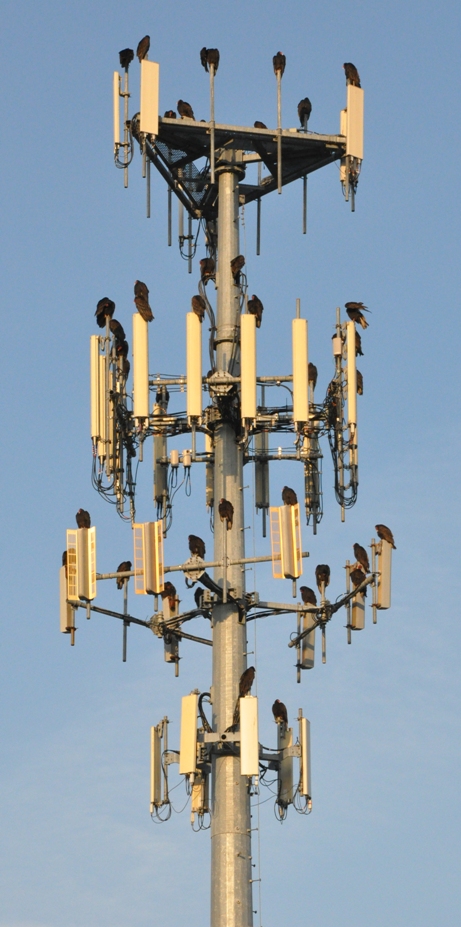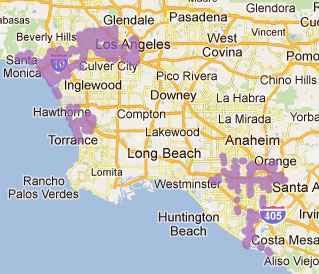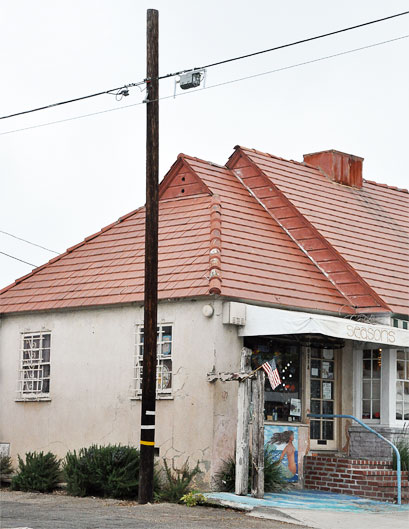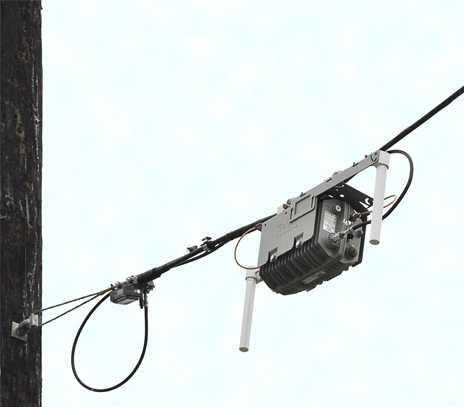This sale marks CrownCastle’s undisputed dominance of the Distributed Antenna System (DAS) market…for now. My prediction, however, is that we are seeing the peak of the DAS market, and that cable TV operators will become the new DAS leaders as they deploy wireless carrier services connected to their existing cable plant backhaul networks. More on this in a couple of days.
As for this sale, don’t forget that NextG is the owner of the basic patents in this field, which presumably will now be controlled by CrownCastle. Also, don’t forget that earlier this year CrownCastle purchased NewPath Networks, another major DAS provider (and a target of a NextG patent infringement lawsuit…I guess that’ll go away now.)
HOUSTON, Dec 16, 2011 (GlobeNewswire via COMTEX) — Crown Castle International Corp. CCI -2.21% announced today that it has entered into a definitive agreement to acquire NextG Networks, Inc. (“NextG”) for approximately $1.0 billion in cash (subject to certain adjustments). NextG, the largest provider of outdoor distributed antenna systems (“DAS”), currently has over 7,000 nodes-on-air and a further 1,500 nodes under construction. In addition, NextG has rights to over 4,600 miles of fiber. DAS is a network of antennas connected by fiber to a communications hub designed to facilitate wireless communications services for multiple operators. The acquisition will expand Crown Castle’s portfolio of DAS, providing additional wireless coverage and capacity solutions to customers beyond those areas traditionally served by towers. The acquisition is expected to close in the second quarter of 2012. Crown Castle expects to fund the acquisition with debt financing.
“Increasingly, we believe that small-cell architecture, such as DAS, will be an important complement to traditional macro tower installations,” said Ben Moreland, Crown Castle’s President and Chief Executive Officer. “We are very pleased with our anticipated acquisition of NextG, which furthers our ability to extend wireless infrastructure beyond those areas traditionally served by towers, thereby broadening our service offering in this growing market and positioning us to benefit from the continued demand for wireless data. We expect the impact to recurring cash flow per share from the contemplated acquisition and related expected debt financing to be approximately neutral at closing. Further, we believe this acquisition increases our growth rates and is accretive to long-term recurring cash flow per share.”
“Our agreement today is testament to the market leadership NextG has achieved over the past few years and to the increasingly critical role small-cell solutions, including DAS, have played and will play in the future to ensure reliable and comprehensive wireless infrastructure,” said Steven Moskowitz, NextG’s Chief Executive Officer. “I am proud of all that our employees have accomplished. We have significantly expanded our footprint, broadened our customer relationships, improved our network deployment efficiency, and continuously upgraded our technology and customer service. Our technology solution will be additive to Crown Castle’s industry-leading offering, and I am confident that NextG and its employees will be strong contributors to Crown Castle’s success for many years to come.”
Consistent with Crown Castle’s focus on the top 100 BTAs in the US, over 90% of NextG nodes are in urban and suburban locations, with 80% in the top ten US metropolitan areas, including New York, Los Angeles, Chicago and Dallas Fort Worth. The NextG assets are expected to provide significant growth, as they currently average only 1.25 tenants per network. Following the contemplated acquisition, Crown Castle expects to be the largest independent DAS operator in the US, with approximately 10,000 nodes and 26 venues in operation or under construction.
NextG is to be acquired from a group of investors led by Madison Dearborn Partners, a private equity firm. Madison Dearborn, Accel Partners, Redpoint Ventures and Meritech Capital Partners purchased NextG in 2009. NextG is being advised by Deutsche Bank Securities Inc., Kirkland & Ellis LLP and Kelley Drye & Warren LLP. Crown Castle is being advised by Cravath, Swaine & Moore LLP.
About Crown Castle
Crown Castle owns, operates, and leases towers and other infrastructure for wireless communications. Crown Castle offers significant wireless communications coverage to 92 of the top 100 US markets and to substantially all of the Australian population. Crown Castle owns, operates and manages over 22,000 and approximately 1,600 wireless communication sites in the US and Australia, respectively. For more information on Crown Castle, please visit www.crowncastle.com .
The Crown Castle International Corp. logo is available at http://www.globenewswire.com/newsroom/prs/?pkgid=3063
About NextG Networks
NextG Networks is a market leader in outdoor DAS and other small-cell solutions, using fiber-fed systems to operate carrier-class wireless networks. With its proprietary fiber-optic architecture and expertise in public way access, NextG designs, permits, builds, operates and manages low power wireless networks. NextG’s distributed systems are protocol-neutral, enabling them to support multiple wireless carriers, services and technologies. NextG provides transport and backhaul services to wireless service providers over discrete, multi-frequency, scalable fiber networks that improve wireless service coverage, capacity and performance. With main offices in Boston, MA, and Silicon Valley, CA, NextG operates wholly-owned regional subsidiaries throughout the United States. For information, visit NextG Networks online at www.nextgnetworks.net .
About Madison Dearborn Partners
Madison Dearborn Partners, based in Chicago, is one of the most experienced and successful private equity investment firms in the United States. Since MDP’s formation in 1992, the firm has raised six funds with aggregate capital of over $18 billion and has completed approximately 120 investments. MDP invests in businesses across a broad spectrum of industries, including basic industries; consumer; financial services; health care; and telecom, media and technology services. Madison Dearborn has a long and successful track record of wireless-related investments, including MetroPCS Communications, Asurion, Omnipoint Corporation, Alaska Native Wireless, Clearnet Communications, Nextel Communications, Nextel Partners and Weather Investments. Other Madison Dearborn investments in the telecom, media and technology services space include Fieldglass, XM Satellite Radio, Intelsat and Univision Communications. For more information, please visit www.mdcp.com .
Cautionary Language Regarding Forward-Looking Statements
This press release contains forward-looking statements that are based on Crown Castle management’s current expectations. Such statements include plans, projections and estimates regarding (i) the timing of closing of the contemplated acquisition of NextG (“Contemplated Acquisition”), (ii) funding of the Contemplated Acquisition, (iii) the utility and role of DAS and small-cell architecture, (iv) the impact of the Contemplated Acquisition on Crown Castle’s success and operating results, including growth rates and recurring cash flow per share, (v) growth opportunity of NextG assets, and (vi) Crown Castle’s relative position in the DAS market following the Contemplated Acquisition. Such forward-looking statements are subject to certain risks, uncertainties and assumptions, including prevailing market conditions and other factors. Should one or more of these risks or uncertainties materialize, or should underlying assumptions prove incorrect, actual results may vary materially from those expected. More information about potential risk factors that could affect Crown Castle’s results is included in our filings with the Securities and Exchange Commission. The term “including,” and any variation thereof, means “including, without limitation.”
This news release was distributed by GlobeNewswire, www.globenewswire.com
SOURCE: Crown Castle International Corp.
![]() As you likely know, the NTIA’s Assistant Secretary for Communications and Information, Lawrence E. Strickling gave LightSquared a big, fat, wet Valentine’s day kiss when he wrote to FCC Chairman Genachowski saying, “…we conclude that LightSquared’s proposed mobile broadband network will impact GPS services and that there is no practical way to mitigate the potential interference at this time.”
As you likely know, the NTIA’s Assistant Secretary for Communications and Information, Lawrence E. Strickling gave LightSquared a big, fat, wet Valentine’s day kiss when he wrote to FCC Chairman Genachowski saying, “…we conclude that LightSquared’s proposed mobile broadband network will impact GPS services and that there is no practical way to mitigate the potential interference at this time.” See: SprinT-Mobile?
See: SprinT-Mobile?





